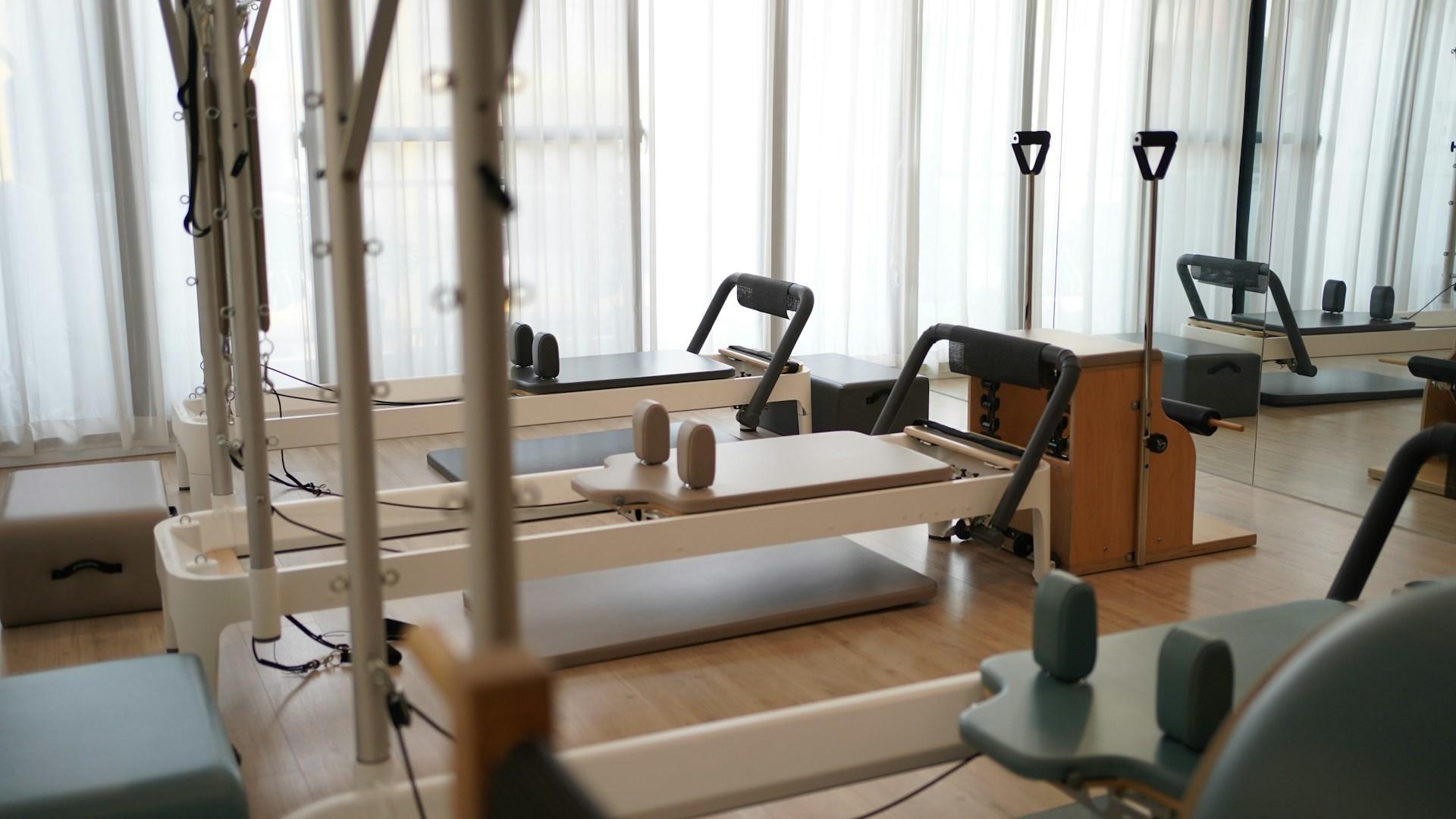The world of Pilates can seem overwhelming when you see the intimidating-looking machines that some classes use! But you don’t need to worry; not every Pilates class requires such intricate equipment. And, even if you take a Reformer class, under the instructor's guidance, you’ll understand how to use the machines in no time.
Let’s learn about the different machines and other equipment typically used in Pilates classes, and what items you’ll need if you want to start beginner Pilates at home.

Equipment for Home Pilates Workouts
Starting a Pilates exercise routine at home is simple and relatively low-cost.
The most important thing is to have a yoga or exercise mat, a carpeted floor, or a towel or blanket you can use to cushion your joints.
That’s it! You can do tonnes of Mat Pilates exercises with only a soft place to practise and your body!
Here are some exercises that require only yourself:
- 100s
- Double leg stretch
- Single leg stretch
- Roll up
- Plank
- Saw
- Pendulum
- Bicycle
- Shoulder bridge
- Toe taps
- Hip dips
- Side bend
- Side kick
- Side leg lifts
- Swan dive
- Bird-Dog
- Hovers
- Swimmers
- Teaser
- Scissor kick
- Plank to Pike
Additional Pilates Equipment
Beyond a mat, there are a few basic pieces of equipment you can invest in to perform some more exercises and modify some of the ones listed above.
These items are typically affordable and don’t take up very much space (with the exception of a ball).
Resistance Bands
You can typically find resistance bands in a pack with a few different resistances. These are bands of latex or other rubbery, stretchy material that can be used to help strengthen and tone muscles. There are long open-ended bands, long bands in a loop style, and short or mini bands in a loop style (booty bands).
Use the longer style of bands for exercises like:
- Resistance shoulder bridge
- Single arm lat pulldown
- Kickbacks with resistance
- Arm scissors
You can also use these bands to support the head during sit-ups or crunch-like movements!
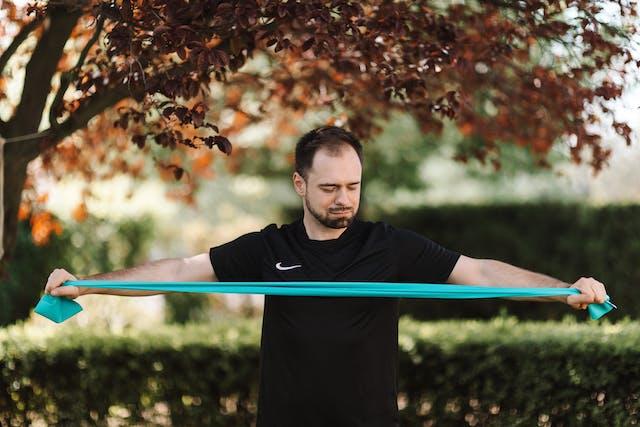
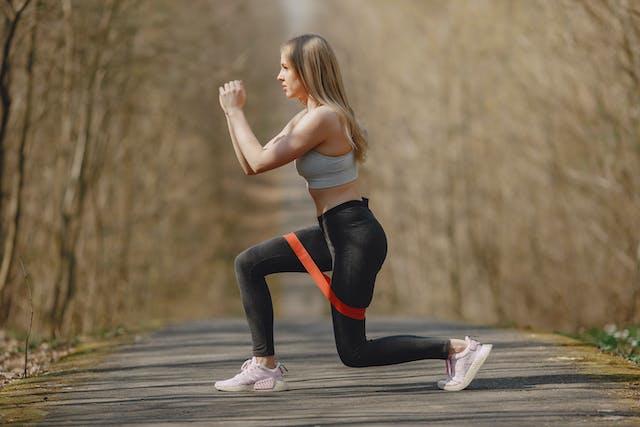
Use the mini bands for exercises like:
- Resistance band crunches
- Band bicycle variation
- Leg openers
- Banded crab-walk
- Bicep pulses
Yoga Ball / Pilates Ball / Exercise Ball
This large inflatable ball is perfect for core strength and stability exercises and can be used to mimic certain exercises that are typically done with a Reformer like:
- Ab curls
- Hip lifts
- Kneeling cat
- Swan dive with ball
- Supported side bend
- Supported side leg lifts
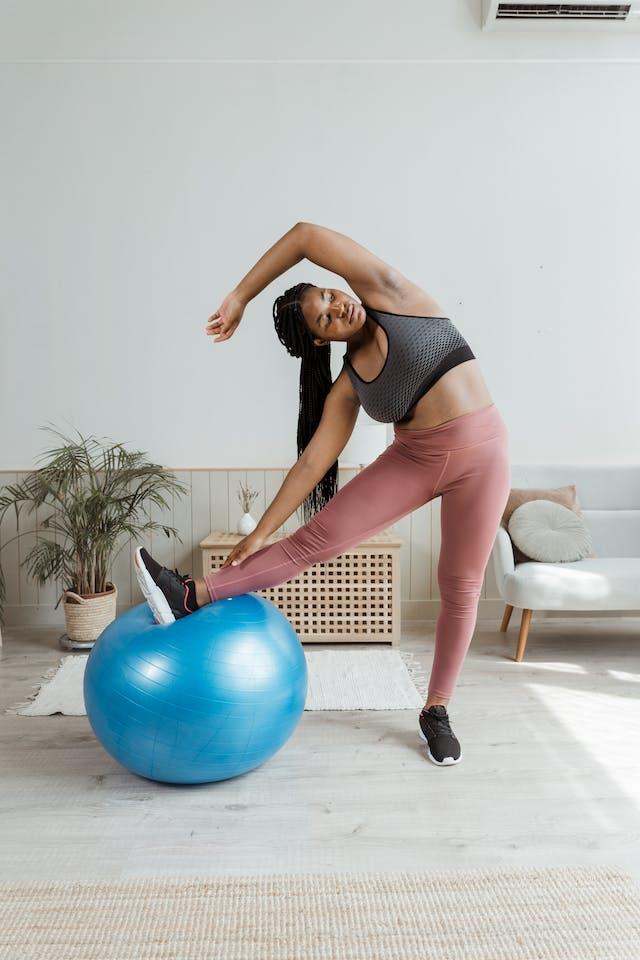
Mini Pilates Ball
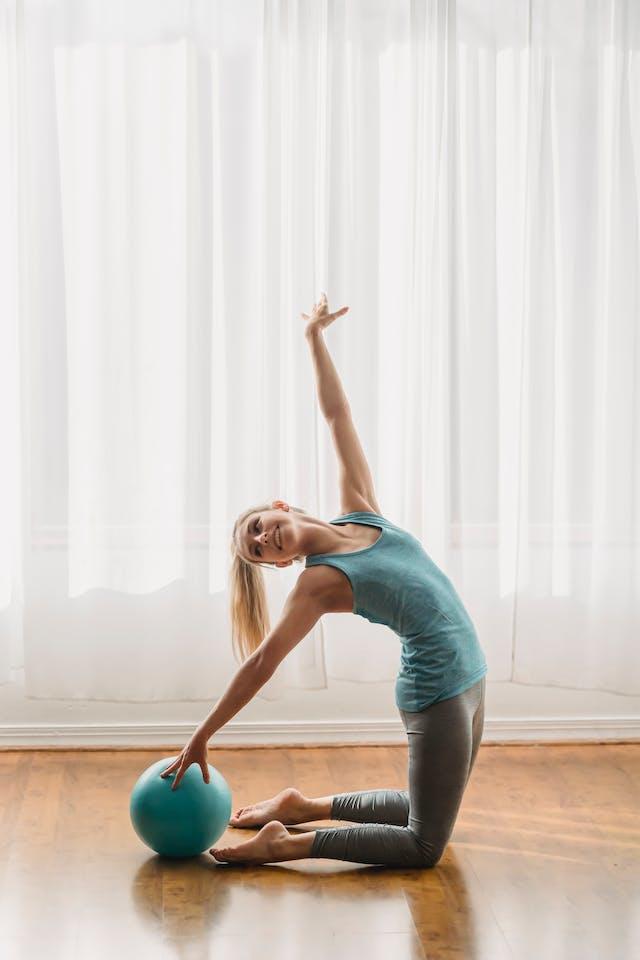
This smaller ball is useful as an object to hold during exercises and squeeze between the knees, activating the inner-thigh muscles. Use it for exercises like:
- Core crunches
- Teaser with Pilates ball transfers
- Figure eights
- Glute bridge with ball
Pilates Ring / Pilates Circle / Magic Ring
This squeezable ring device is great for inner-leg activation. Use it for exercises like:
- Around the world with Pilates ring
- 100s with Pilates ring
- Bridge with Pilates ring
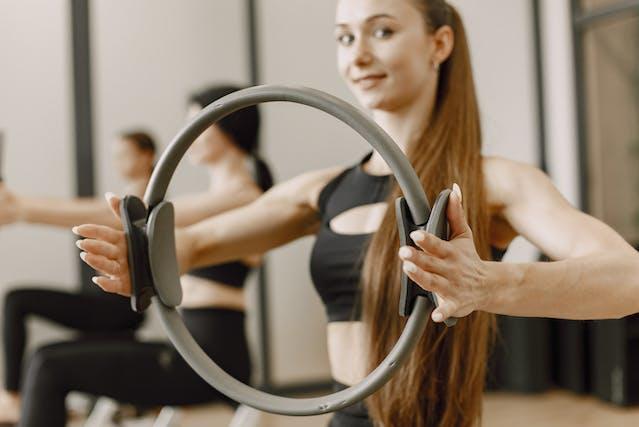
Foam Roller
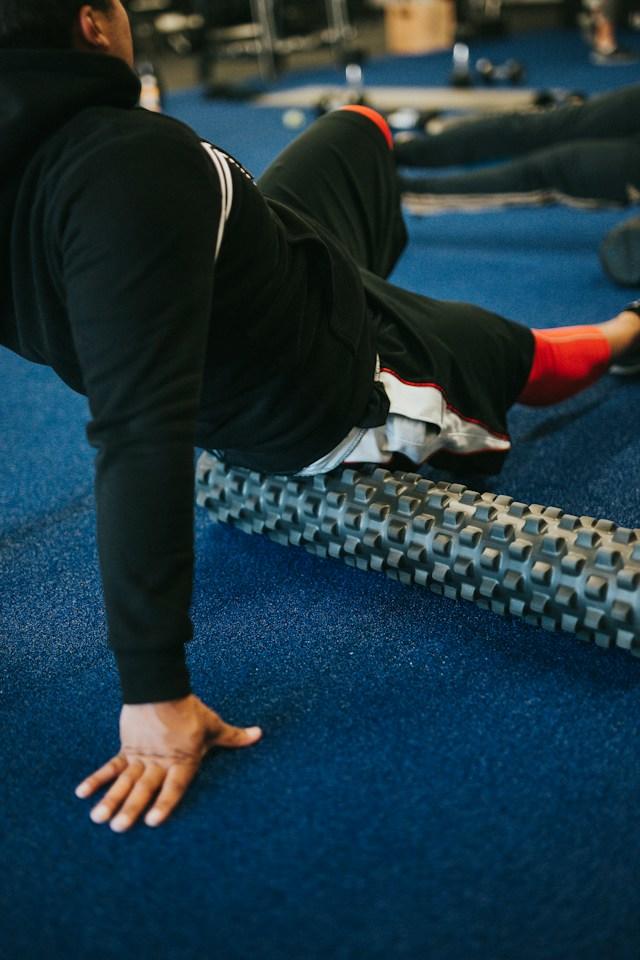
Foam rollers serve a dual purpose in Pilates: you can use them for exercises and then use them to manipulate your muscles for recovery and increased strength after your workout is over! There are two types of rollers: smooth and textured.
Use them as an exercise prop in moves like:
- Shoulderblade hugs
- Spine and back massage
- Lifted single-leg stretch
Ankle Weights
Ankle weights simply add more difficulty to any movements you make with your legs, which strengthens the leg muscles, core, and glutes. You can also utilise wrist weights or small hand weights in your workouts for an additional challenge!
Ankle weights are particularly helpful for exercises like:
- Leg lifts
- Donkey kicks
- Bird-dog
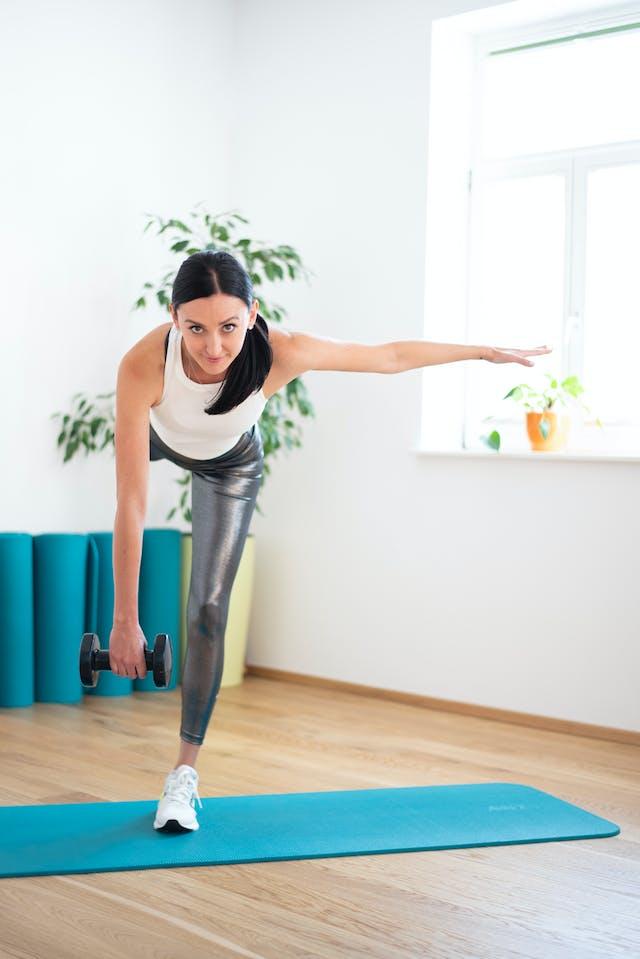
Pilates Machines
Joseph Pilates invented special machines designed for performing specific exercises. The Pilates Reformer was specially designed at first as a way for bed-bound hospital patients to begin strength and resistance training without leaving the bed.
The Reformer was the first machine that Pilates invented, but he didn’t stop there! Here are all the main Pilates machines that you might see in a Pilates class. They are rather expensive and take up a lot of space, so they aren’t a feasible piece of equipment for most people to buy.
Thankfully, many Pilates studios have some or all different types of equipment for students to use!
Pilates Reformer
This sliding platform is mounted on top of a frame and uses springs and pulleys to help with exercises.
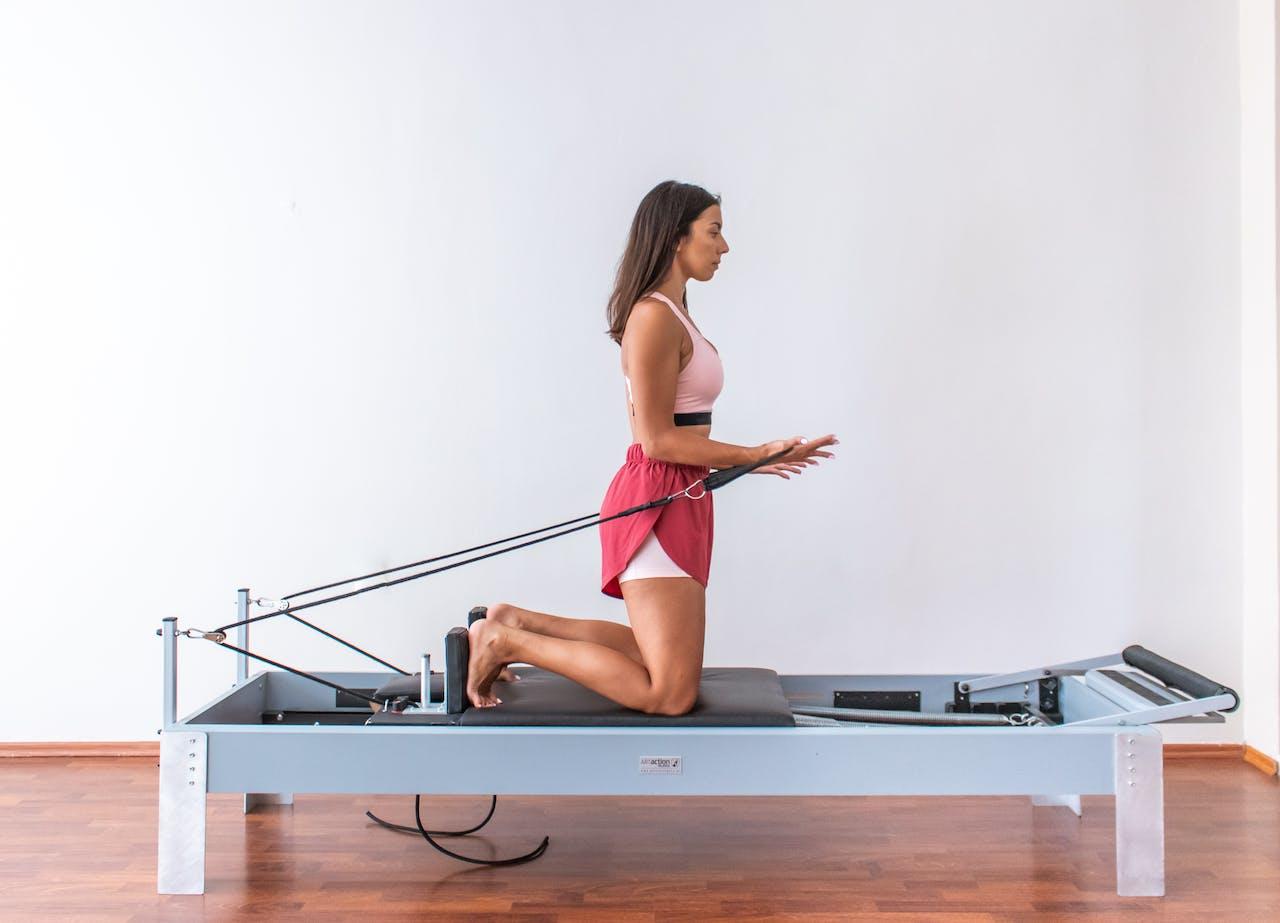
Cadillac Reformer
The Cadillac Reformer is a Reformer with an additional frame built around it, which is called the Tower. Sometimes, you can find the Tower without the built-in Reformer.
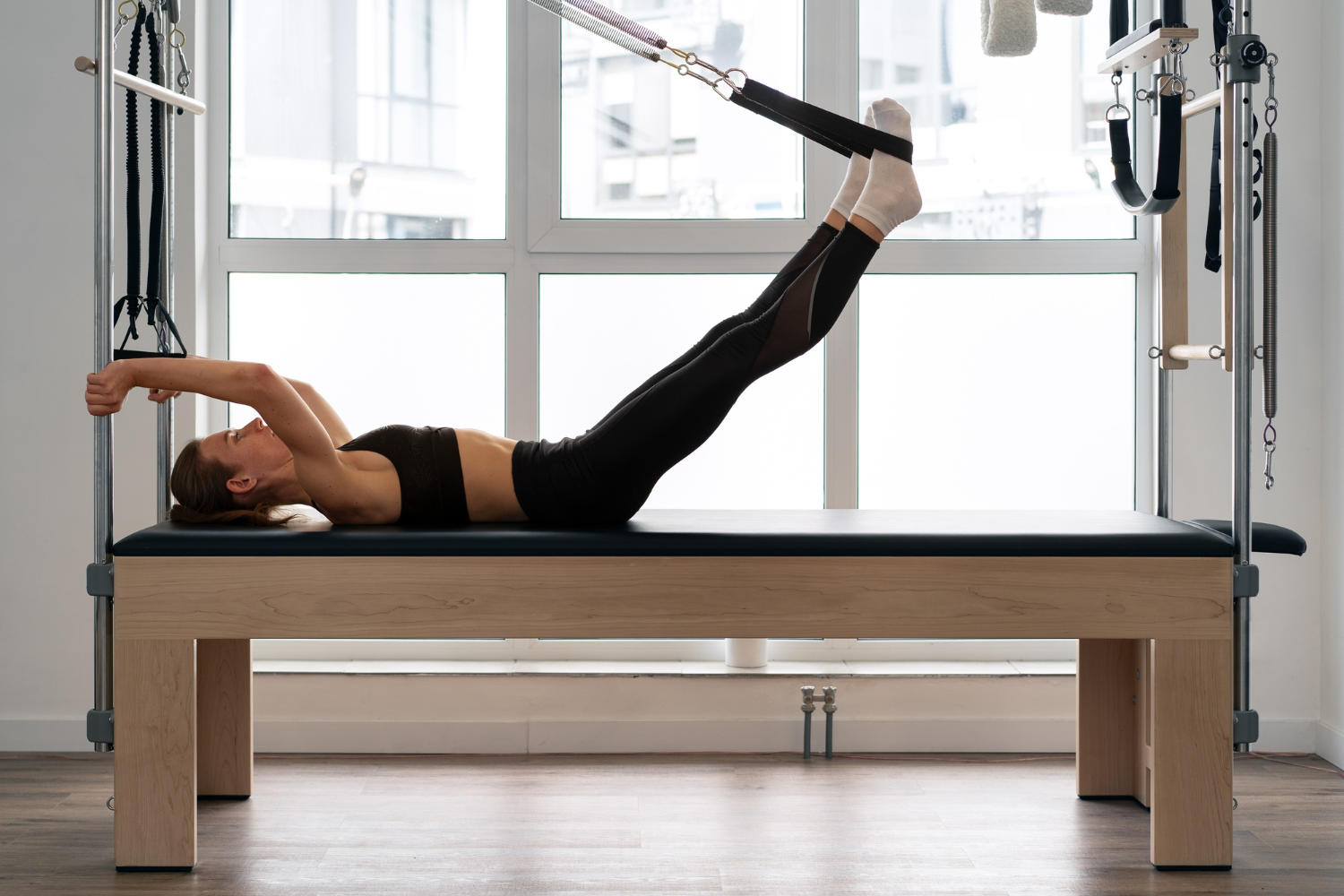
Pilates Chairs
The Pilates chairs were invented as space-saving home apparatuses that double as functional furniture. The most often-used chair is the Wunda Chair. There are also two variations: the High Chair and the Arm Chair.
Wunda Chair
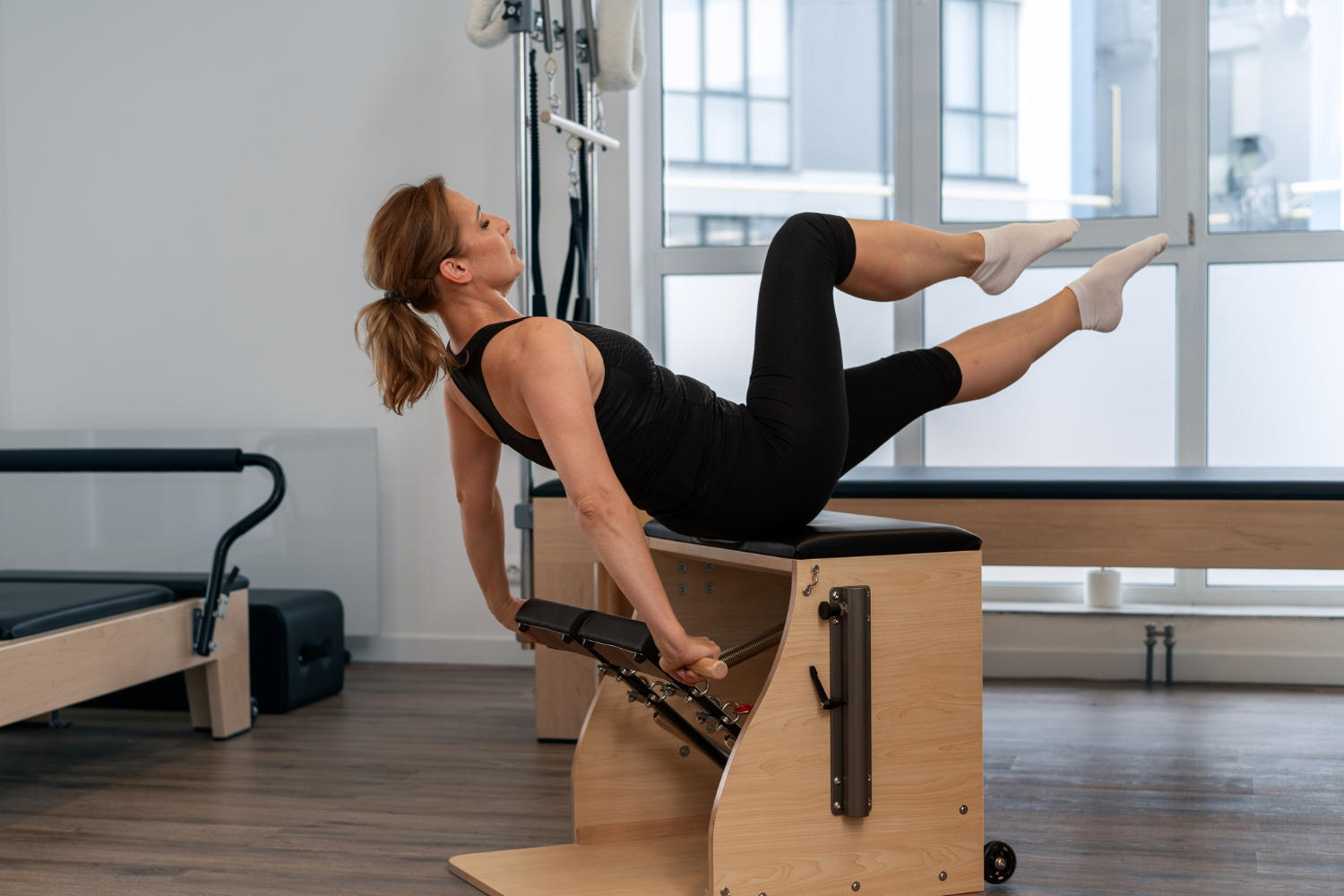
Pilates Barrels
The Barrel is used mostly for spine stretching and posture correcting exercises. You'll often see it paired with the Ladder, which offers stability and allows for even more exercises to be performed. The smaller version of the Barrel is the Arc Barrel.
Ladder Barrel
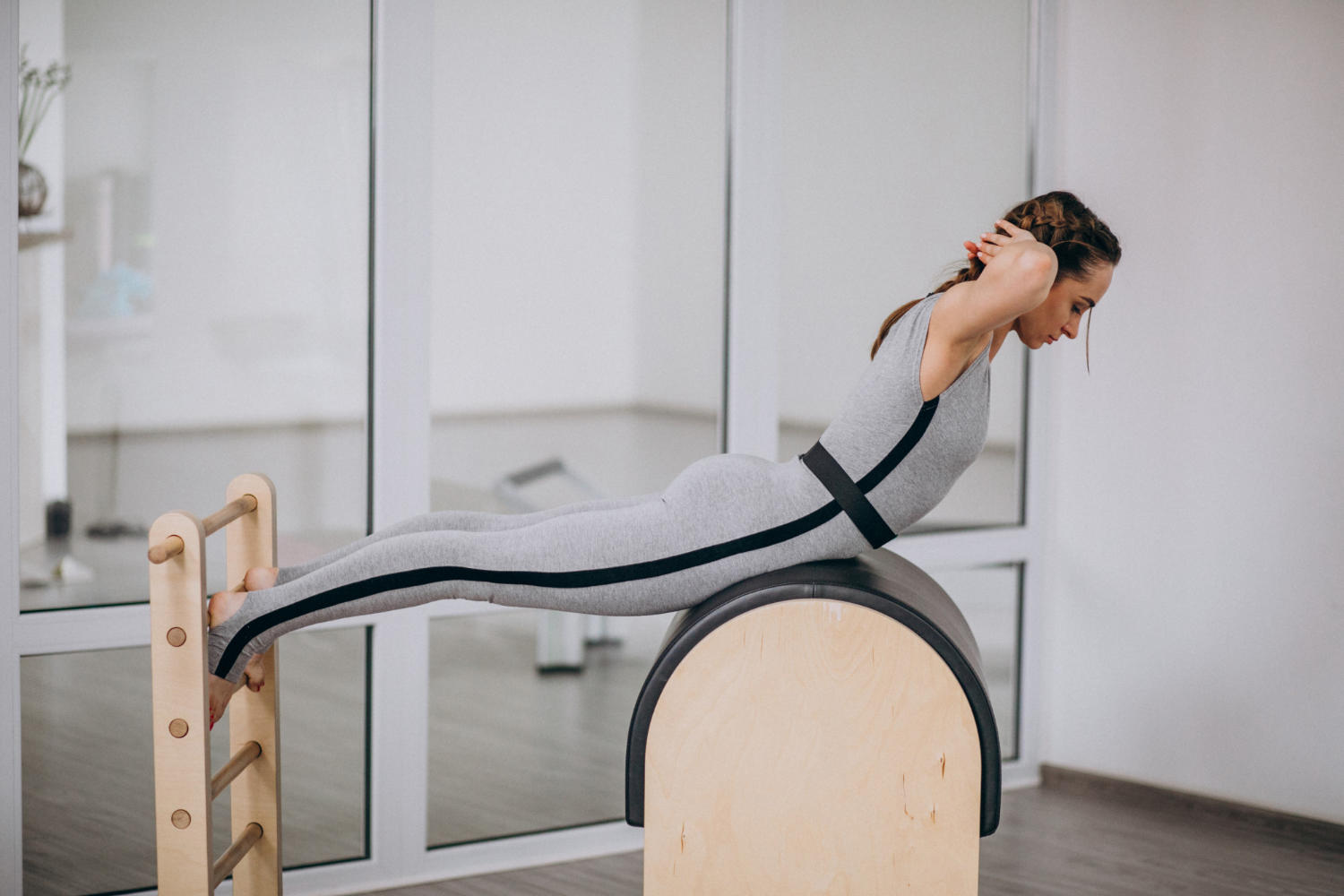
Pilates Accessories
In addition to your exercise equipment, there are a few helpful accessories that can make your Pilates exercises even better.
- Water Bottle
- Headband or Sweatband
- Absorbent Towel
- Grippy Socks
- Pilates Shoes
Some studios will require you to bring grippy socks or Pilates shoes and a small towel for sweat. For a home practice, these things are optional.
While Pilates doesn’t require a lot of equipment to get started, you can accessorize and build your Pilates home studio with additional items if you want to.

